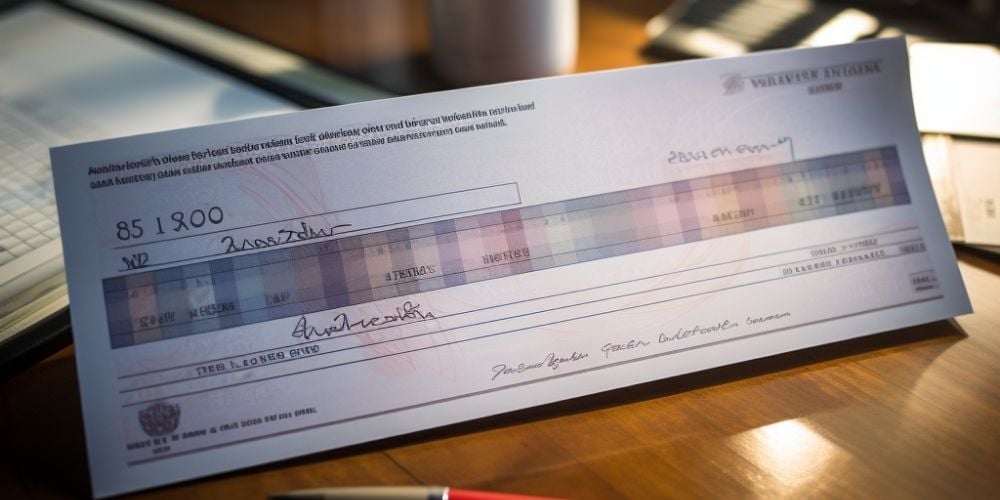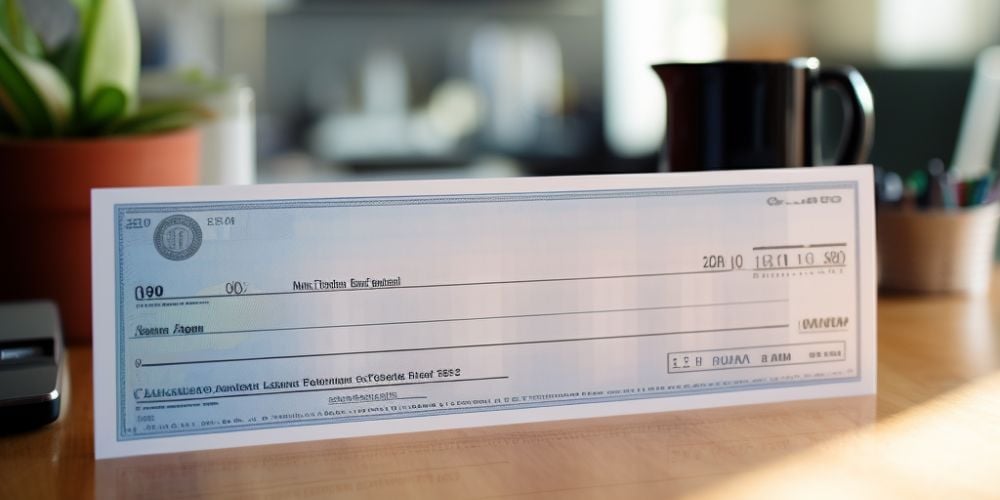Business checks play a crucial role in financial transactions for companies of all sizes.
To ensure smooth transaction processing, it is essential to understand how to properly endorse business checks.
In this comprehensive guide regarding how to endorse business checks, we will walk you through the steps, best practices, frequently asked questions, and pro tips for endorsing business checks with confidence.
Understanding Business Check Endorsements
Properly understanding business check endorsements is crucial to ensuring the legality and security of financial transactions.
Business check endorsements refer to the act of signing the back of a check to authorize its payment or transfer to another party. The endorsement serves as proof that the payee has authorized the transaction.
It not only protects the payor by ensuring that the check is only cashed or deposited by the intended recipient, but also offers a level of protection for the payee.

Different Types of Endorsements
There are various types of endorsements, including blank, restrictive, and special endorsements.
Blank Endorsement:
A blank endorsement involves signing the back of the check without adding any further instructions or limitations. It is the simplest form of endorsement and allows the check to be cashed or deposited by any authorized party.
Restrictive Endorsement:
With a restrictive endorsement, you add limitations or conditions to the check’s use. For instance, you can include phrases such as “For Deposit Only” or “Pay to the Order of [Company Name] Only.”
This type of endorsement ensures that only the intended recipient can deposit or cash the check.
Special Endorsement:
A special endorsement allows you to transfer the check to another payee. You can accomplish this by signing the back of the check and including the name of the person or entity to whom you are transferring it.
The new payee can then endorse it further for deposit or cashing.
How to Endorse Business Checks: Complete Guide
Understanding the step-by-step process of endorsing business checks is vital for smooth and error-free transactions.
Locate the endorsement area on the back of the check:
To begin, flip the check over and locate the designated area for endorsement. This area is typically located on the top or bottom half of the back of the check and is usually marked with the words “Endorse Here” or a similar indication.
Sign your name and/or business name:
Using a pen with blue or black ink, sign your name and/or your company’s name exactly as it appears on the front of the check.
Ensure that your signature is clear, legible, and consistent with the name on the front. This helps avoid any confusion or discrepancies during the check processing.
Add any additional information or restrictions (if necessary):
In some cases, you may want to include additional instructions or limitations on the endorsement.
For example, if you want the check to be deposited only, you can write “For Deposit Only” below your signature. Similarly, if you intend to transfer the check to another party, write “Pay to the order of [Name]” below your signature. These instructions help control how the check can be processed.
Note: It is important to note that different banks may have variations in their endorsement requirements. It is recommended to refer to your specific bank’s guidelines or speak with a bank representative to ensure compliance.
Best Practices for Endorsing Business Checks
Following best practices when endorsing business checks helps ensure efficient and secure transactions. Here are some key points to keep in mind:
Use a consistent signature for endorsement:
Consistency in your endorsement signature is crucial to prevent confusion and ensure the smooth processing of checks.
Try to replicate your normal signature as closely as possible, maintaining a consistent style and size. This consistency establishes a recognizable endorsement and minimizes the risk of errors or disputes.
Avoid overwriting or smudged endorsements:
When endorsing a check, it is essential to ensure that your endorsement is clear and readable.
Avoid writing over any pre-printed information on the back of the check, such as the MICR line or any other important details.
Overwriting or smudging the endorsement may interfere with the bank’s processing, potentially causing delays or errors.
Keep track of endorsed checks for record-keeping purposes:
Maintaining accurate records of all endorsed checks is crucial for efficient bookkeeping and financial management.
Note down the check number, date, and amount in your records. These details serve as documentation for future reference and help with reconciliations.

Frequently Asked Questions (FAQs)
Can I endorse a business check to someone else?
Yes, you can endorse a business check to another party using a special endorsement. Simply sign the back of the check and include the name of the person or entity to whom you are transferring it.
Can business checks be endorsed for mobile deposit?
Yes, in most cases, business checks can be endorsed for mobile deposit. However, it is advisable to check with your bank to ensure they accept mobile deposits for business accounts.
Are there any specific endorsement requirements for different banks?
Different banks may have slight variations in their endorsement policies or requirements. It is recommended to refer to your specific bank’s guidelines or speak with a bank representative to ensure compliance.
Helpful Tips and Pro Advice
How to handle damaged or incorrect endorsements:
If you make an error while endorsing a check or the endorsement becomes damaged, it is best to void the check and request a new one. Avoid using correction fluid or altering the original endorsement in any way to maintain its legality.
To protect against check fraud, store your business checks in a secure location. Monitor your account regularly for any suspicious activity, and report any unauthorized transactions immediately to your bank.
Understanding your bank’s specific endorsement policies:
Each banking institution may have its unique policies and requirements concerning business check endorsements. Take the time to familiarize yourself with your bank’s specific guidelines to avoid any potential issues.
Conclusion:
Mastering the art of endorsing business checks is essential for smooth financial transactions.
By understanding the different types of endorsements, following the step-by-step guide, and adhering to best practices, you can confidently endorse business checks.
Remember to consult your specific bank’s guidelines for any variations in endorsement requirements.
By implementing these practices, you can ensure the legality and security of your financial transactions, maintaining accuracy and efficiency in your business operations.


 Tags:
Tags:










